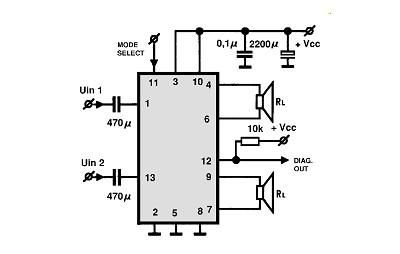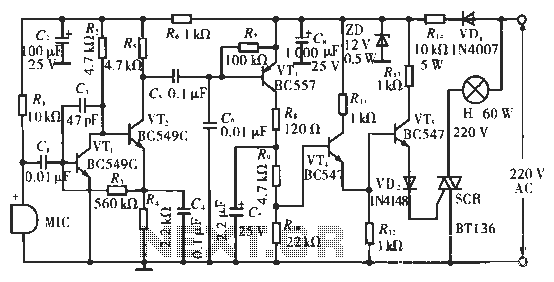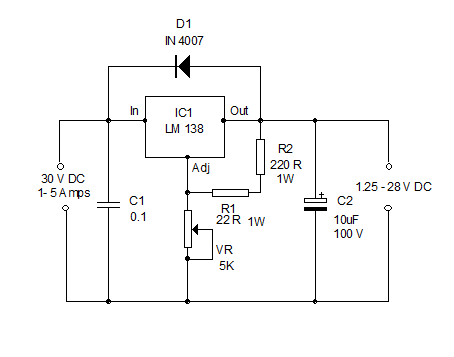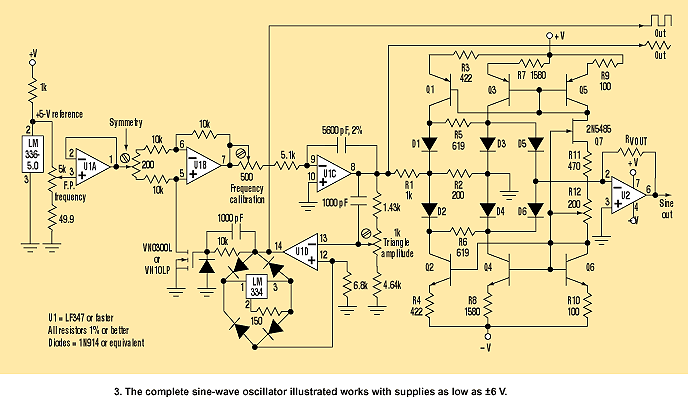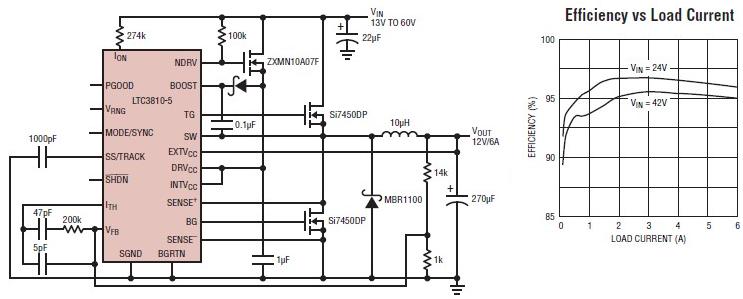
Consumers have the power of the human voice function splice
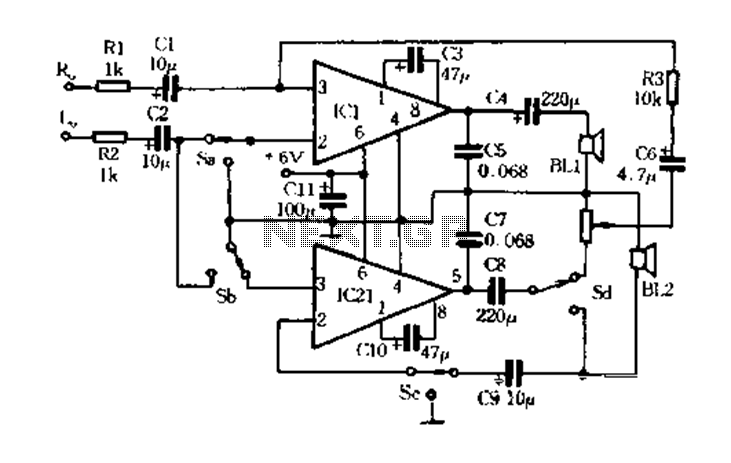
The circuit functions as a switch (S) that connects a microphone to a speaker, utilizing an electret microphone. The audio signal is routed through capacitor C9 to an integrated circuit (IC2) for amplification. The amplified signal is further processed by capacitor C6 and resistor R3, mixed with the sound signal, and then sent to another speaker through an M386 amplifier. The M386's pin serves as the inverting input, and the circuit is designed for stereo recording that captures the characteristics of human voice in both left and right channels in phase. However, high-frequency audio signals are not balanced for recording. To address this, an inverted signal from the M386 is added to cancel out unwanted noise. When switch S is toggled to the opposite side, IC2 operates as a two-channel power amplifier for the left and right outputs. The circuit's output power (W6) relies on the correct mounting and quality of components, ensuring proper functionality without the need for extensive debugging. Volume and tone control depend on the circuit's design, which can effectively minimize sound artifacts when high-quality recording cassettes are used. This circuit is relatively simple and does not require a specialized karaoke circuit like the CXA1642, although it may experience some limitations during temporary returns.
The circuit design integrates a straightforward approach to audio signal processing, emphasizing clarity and efficiency in capturing and amplifying sound. The use of an electret microphone allows for sensitive audio capture, suitable for various applications, including karaoke and public speaking. The configuration of capacitors C6 and C9 plays a crucial role in filtering and coupling the audio signal, ensuring that the desired frequencies are adequately amplified while minimizing noise.
The M386 amplifier serves as the core amplification component, with its inverting input configured to maintain phase integrity between the left and right audio channels. This design choice is critical for applications requiring stereo sound, as it preserves the spatial characteristics of the audio being recorded or played back. The inclusion of volume and tone controls enables users to tailor the audio output to their preferences, enhancing the overall listening experience.
The circuit's simplicity is one of its key advantages, allowing for easy assembly and maintenance. It is essential to ensure that all components are of high quality to achieve optimal performance, as subpar components may lead to distortion or other audio artifacts. The design's reliance on common electronic components makes it accessible for hobbyists and professionals alike, providing a reliable solution for audio amplification needs without the complexities associated with more advanced systems.D switch S location function. FIG microphone to a speaker on behalf of the (also designed a door using an electret microphone) port channels through C9 send people IC2 amplify the signal amplified by the C6, R3 sent lc] mixed with the sound signal is amplified after the output to another speaker 0 I a M386 of, pin is the inverting input, stereo recording according to the characteristics of the human voice in the left and right channels in the same phase, while the high-frequency audio signal level for non- balanced recording, therefore, by adding the inverted I4M386 posterity sound it was canceled out. When the switch S pull to the other side, lcl and IC2, respectively, as the right and left two-channel power amplifier, the output power W 6 of the circuit as long as the correct component mounting, component quality is good, no debugging that is able to work properly.
Volume and tone control porphyrin to rely on their own sources of the circuit has good people eliminate sound effects, you should use a good quality recording cassettes. This circuit is relatively simple, and can not use special karaoke OK CXA1642 assembled consumption compared to singing circuit, but the water did affect you when a temporary return
The circuit design integrates a straightforward approach to audio signal processing, emphasizing clarity and efficiency in capturing and amplifying sound. The use of an electret microphone allows for sensitive audio capture, suitable for various applications, including karaoke and public speaking. The configuration of capacitors C6 and C9 plays a crucial role in filtering and coupling the audio signal, ensuring that the desired frequencies are adequately amplified while minimizing noise.
The M386 amplifier serves as the core amplification component, with its inverting input configured to maintain phase integrity between the left and right audio channels. This design choice is critical for applications requiring stereo sound, as it preserves the spatial characteristics of the audio being recorded or played back. The inclusion of volume and tone controls enables users to tailor the audio output to their preferences, enhancing the overall listening experience.
The circuit's simplicity is one of its key advantages, allowing for easy assembly and maintenance. It is essential to ensure that all components are of high quality to achieve optimal performance, as subpar components may lead to distortion or other audio artifacts. The design's reliance on common electronic components makes it accessible for hobbyists and professionals alike, providing a reliable solution for audio amplification needs without the complexities associated with more advanced systems.D switch S location function. FIG microphone to a speaker on behalf of the (also designed a door using an electret microphone) port channels through C9 send people IC2 amplify the signal amplified by the C6, R3 sent lc] mixed with the sound signal is amplified after the output to another speaker 0 I a M386 of, pin is the inverting input, stereo recording according to the characteristics of the human voice in the left and right channels in the same phase, while the high-frequency audio signal level for non- balanced recording, therefore, by adding the inverted I4M386 posterity sound it was canceled out. When the switch S pull to the other side, lcl and IC2, respectively, as the right and left two-channel power amplifier, the output power W 6 of the circuit as long as the correct component mounting, component quality is good, no debugging that is able to work properly.
Volume and tone control porphyrin to rely on their own sources of the circuit has good people eliminate sound effects, you should use a good quality recording cassettes. This circuit is relatively simple, and can not use special karaoke OK CXA1642 assembled consumption compared to singing circuit, but the water did affect you when a temporary return
Warning: include(partials/cookie-banner.php): Failed to open stream: Permission denied in /var/www/html/nextgr/view-circuit.php on line 713
Warning: include(): Failed opening 'partials/cookie-banner.php' for inclusion (include_path='.:/usr/share/php') in /var/www/html/nextgr/view-circuit.php on line 713
